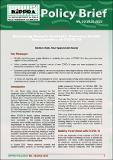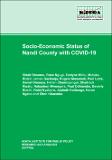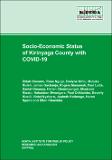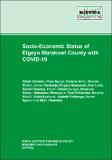| dc.description.abstract | On 12th March 2020, Kenya reported the first
confirmed case of COVID-19. By end of December
2020, it had experienced two peaks of positivity rate.
In March 2021, the government rolled out a National
Vaccine Deployment Plan that aimed to vaccinate
26 million Kenyans by 2022. By end of December
2021, over 10 million people had been vaccinated,
supported by an accelerated vaccine rollout plan.
On 15th December 2021, the first case of new variant
Omicron was reported in the country.
When COVID-19 struck, various measures were
instituted to manage the spread and protect the
most vulnerable in the society. Among these
measures were mobility restrictions, which included
requirements to work from home; restrictions on
public events including social, business, and political
gatherings; controls on public transport, including
the capacity carried and ensuring wearing of masks;
domestic movement restrictions including dusk-to dawn curfew and cessation of movement to and from
counties with higher positivity rate; school closures;
and restrictions on international travel.
In August 2021, Kenya reopened schools and
vacated existing controls on carrying capacity for
public passenger transport. In October 2021, the
Government vacated the dusk-to-dawn curfew that
had hitherto controlled local movement within the
country. Since then, all the mobility restrictions have
been vacated.
That said, the Omicron variant saw some countries
especially in Europe and China reinstate mobility
restrictions. This raised fear that should the situation
intensify with Omicron, or any other variants emerge,
Kenya could reinstate, some if not all, of the vacated
mobility restrictions.
This policy brief examines how mobility restrictions
imposed in Kenya affected the COVID-19 caseload
and positivity rate, and economic performance, in
drawing lessons for any possible re-introduction of
vacated mobility restrictions should new COVID-19
variants emerge | en |




